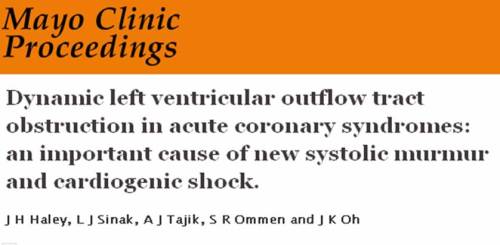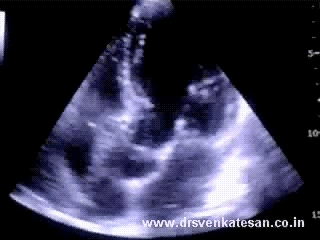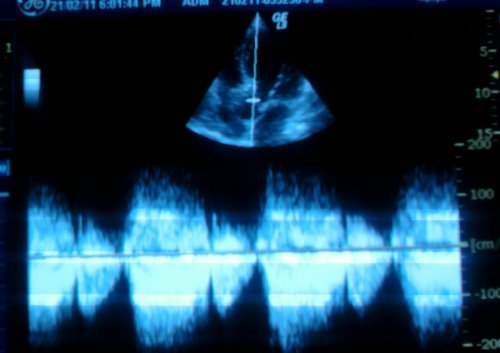Hypotension is one of the dreaded complication of acute STEMI.
- It can be due to either a mechanical complication or hypovolemia.
- The hypotension in inferoposterior MI is often related to enhanced vagal tone and easily correctable with atropine and fluid administration.
- RVMI is the classical example of hypotension that may improve with fluid resuscitation
- Hypotension, if not reversible within 12 hours , is more likely to represent a more sinister mechanism like pump failure, MR or ventricular septal tear etc .
A new mechanism for persistent hypotension is increasingly recognised.
This is due to the
1.Loss of LVOT dynamic activity.
2.Excessive dynamism of LVOT.
LVOT contractile and ejectile falure
Even though LV outflow tract contain less contractile myocytes , it has an important mechanical job to do. We know , it’s primary job is that of a conduit but it also has to eject the blood into aorta with sufficient force. In fact, it is thought much of the acceleration of blood velocity occur in LVOT . So, LVOT plays a key role in maintaining the cardiac index. An excessively dynamic LVOT will impede the forward blood flow as in HCOM. Similarly less dynamic contraction of LVOT results in low velocity propulsion , that interferes with proper delivery of blood from LV cavity into the aorta .
These factors get amplified in acute MI , as it is a compromised situation with fluctuating HR and contractility. So a properly functioning LVOT conduit is absolutely mandatory.
STEMI due to a proximal LAD obstruction located can involve the septal .If the first septal branch happens to be a major one, there will be definite impact on the LVOT function.
Excessive dynamism , LVOT desynchrony LVOT collapse .
LVOT has a medial border formed by IVS , an anterior surface and a posterior surface .The lateral border is relatively boundary less , except it is guarded by the anterior mitral leaflet.
But one should recall , the AML comes towards the LVOT only in diastole . When it comes in systole it becomes a pathological event called SAM (Systolic anterior motion )
The LVOT wall desynchrony can occur in both anterior and posterior MI.In a mulivessel CAD this can happen when there is disproportionate inferior to anterior wall motion defect.
Management.
- There is no specific management strategies aimed at restoring LVOT function.
- Emergency revascularisation will attenuate the mechanical dysfunction
- Dosage of powerful inotropic agents should be moderated in dynamic LVOT obstruction.
- Spontaneous recovery may occur in few
http://circ.ahajournals.org/cgi/reprint/116/5/e110.pdf
Haley et all Mayoclinciproceedings 1999

Read Full Post »







